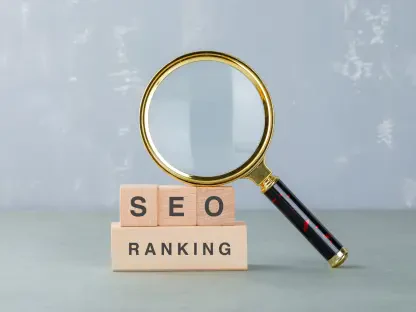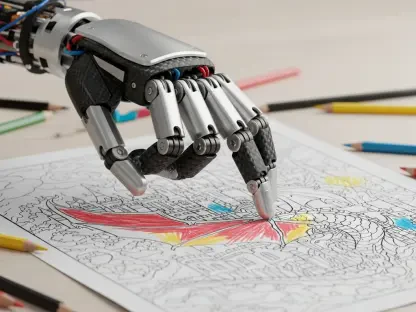The Rise of AI in Video Advertising: Industry Overview
Imagine a small family-owned business in Los Angeles crafting a humorous video ad in mere minutes, only to see it explode online with millions of views, rivaling campaigns from global brands. This is no longer a distant dream but a reality in 2025, driven by the transformative power of artificial intelligence in video advertising. The latest Digital Video Ad Spend & Strategy Report from the Interactive Advertising Bureau (IAB) underscores AI as a game-changer, reshaping how brands create, target, and deliver content in an increasingly competitive digital landscape.
The adoption of AI has reached unprecedented levels, with nearly 90% of advertisers now integrating these tools into their video ad strategies. This widespread use is leveling the playing field, allowing businesses of all sizes—from startups to established corporations—to produce high-impact campaigns without the traditional barriers of cost and time. AI’s ability to streamline processes and enhance creativity is redefining industry norms, making advanced advertising accessible to a broader range of players.
Key market players, alongside technological advancements like generative AI, are driving this shift, while organizations such as the IAB play a crucial role in establishing standards to guide ethical and effective implementation. The focus on innovation is evident as companies experiment with new tools to meet evolving consumer demands. This dynamic environment signals a pivotal moment for the industry, where technology and strategy must align to maximize impact.
Key Trends and Innovations in AI-Driven Video Ads
Emerging Trends Shaping the Industry
The IAB report highlights several transformative trends fueled by AI in video advertising, with cost reduction standing out as a primary benefit. Brands can now produce professional-grade content using minimal resources, often replacing expensive studio setups with laptop-based solutions. This democratization of production empowers marketers to allocate budgets more strategically while maintaining quality.
Another significant trend is the speed of creative testing, where AI enables the generation of multiple ad variations in real time for rapid evaluation. Additionally, enhanced targeting precision allows for tailored content that resonates with specific demographics or cultural contexts, boosting engagement. Meanwhile, consumer preferences are shifting toward authenticity, coupled with shrinking attention spans, which necessitates quick yet genuine content creation to capture interest.
A compelling example of AI’s impact is the viral success of a family-owned tamale shop in Los Angeles, which used AI-assisted tools to create a video that garnered 22 million views. This case illustrates how small businesses can leverage technology to compete with larger brands, achieving massive reach without substantial investment. Such stories highlight AI’s role in breaking down traditional barriers and fostering innovation across the sector.
Market Data and Growth Projections
Delving into the numbers, the IAB report projects that by 2026, 40% of all video ads will be AI-assisted, reflecting a swift move toward integration. Current usage statistics further reveal the depth of this adoption: 42% of advertisers are tailoring content for specific audiences, 38% are adjusting visual styles, and 36% are enhancing contextual relevance through AI. These figures demonstrate a clear reliance on technology to refine advertising approaches.
Looking ahead, the data suggests an accelerating trend over the next year, with more brands expected to embed AI into their workflows. This shift is not merely about adoption but about transforming how campaigns are conceptualized and executed. The numbers point to a future where AI becomes an integral component of strategic planning, pushing the boundaries of personalization and efficiency.
Beyond statistics, this rapid integration indicates a broader industry evolution, where adaptability to technological advancements will define competitive success. As tools become more sophisticated, their potential to optimize every stage of ad creation—from ideation to distribution—grows, setting the stage for a redefined advertising ecosystem in the coming years.
Challenges in Adopting AI for Video Advertising
While AI offers remarkable benefits, its adoption in video advertising is not without hurdles. One prominent concern is the risk of losing the human touch in storytelling, as over-reliance on algorithms may produce content that feels mechanical or disconnected. Striking a balance between technological efficiency and emotional resonance remains a critical challenge for brands aiming to maintain audience trust.
Industry experts, including Keith Kakadia, CEO of Sociallyin, caution against prioritizing speed over authenticity. The danger lies in creating ads that, while polished, fail to forge genuine connections with viewers, potentially alienating loyal customers. This tension between automation and personal engagement requires careful navigation to ensure that campaigns retain their unique voice and cultural relevance.
To address these issues, a hybrid approach is often recommended, where AI tools support rather than dominate the creative process. By combining data-driven insights with human intuition, advertisers can craft narratives that resonate deeply while still benefiting from technological efficiencies. This strategy underscores the need for ongoing collaboration between tech solutions and creative teams to achieve lasting impact.
Regulatory Landscape and Ethical Considerations
The integration of AI in video advertising operates within a complex regulatory environment, where data privacy stands as a paramount concern. Compliance with existing laws and guidelines is essential to protect consumer information, especially as AI systems often rely on vast datasets for targeting and personalization. Navigating these legal frameworks demands vigilance from advertisers to avoid potential pitfalls.
Ethical considerations also play a significant role, particularly in preventing the creation of misleading or inauthentic content that could undermine consumer trust. The use of AI must be transparent, ensuring that audiences are not deceived by artificially generated material. This responsibility falls on brands to uphold integrity while harnessing the power of advanced tools for their campaigns.
Industry bodies like the IAB are actively working to establish guidelines that promote responsible AI adoption. These efforts focus on fostering best practices that balance innovation with accountability, providing a roadmap for advertisers to follow. As regulations evolve, adherence to such standards will be vital in maintaining credibility and safeguarding the industry’s reputation in the digital space.
The Future of AI in Video Advertising
Looking toward the horizon, AI’s trajectory in video advertising promises further innovation with emerging tools such as Creatify, Runway, and Google Veo 3 leading the charge. These platforms are designed to simplify ad creation, offering capabilities that range from instant video generation to advanced customization. Their development signals a future where even non-specialists can produce high-quality content with ease.
Potential disruptors, including next-generation generative models and omnichannel automation, are poised to redefine how ads are created and distributed. These advancements could streamline workflows across multiple platforms, ensuring seamless delivery of tailored content to diverse audiences. Such technologies are likely to amplify the reach and effectiveness of campaigns, setting new benchmarks for the industry.
Consumer preferences, coupled with global market dynamics, will continue to shape AI integration through 2026 and beyond. As innovation accelerates, advertisers must remain agile, adapting to shifting expectations and technological breakthroughs. The interplay of these factors will determine how AI evolves as a cornerstone of video advertising, influencing strategies on a worldwide scale.
Conclusion: Balancing Technology and Creativity
Reflecting on the insights gathered, the transformative potential of AI in video advertising becomes evident through its ability to slash costs, boost efficiency, and enable hyper-targeted content. The journey reveals a powerful shift, where technology empowers even the smallest businesses to achieve remarkable visibility, as seen in real-world success stories that captivated millions.
Yet, the path forward demands a careful blend of innovation with human storytelling, ensuring that authenticity remains at the core of every campaign. The industry recognizes that while AI offers unmatched advantages, its true value emerges when paired with creative input that forges emotional bonds with audiences.
Moving ahead, advertisers are encouraged to view AI as a strategic ally, integrating it thoughtfully to enhance rather than replace the human element. Prioritizing genuine connections over pure efficiency stands out as a guiding principle for sustained success. Embracing this balanced approach promises to unlock new possibilities, shaping a future where technology and creativity harmonize to redefine engagement in the digital realm.









